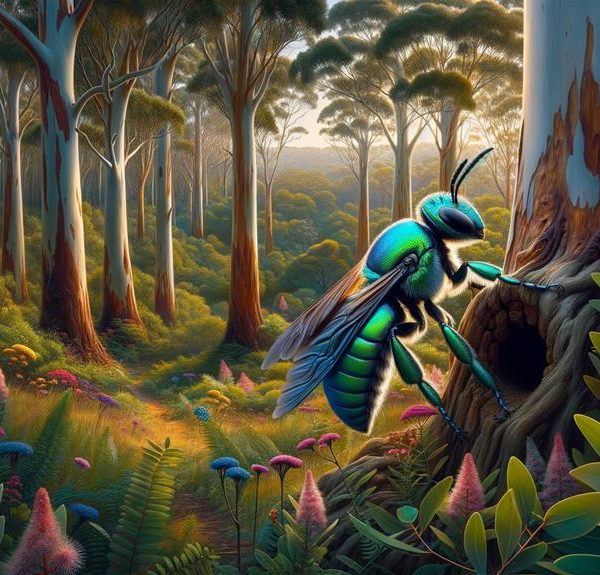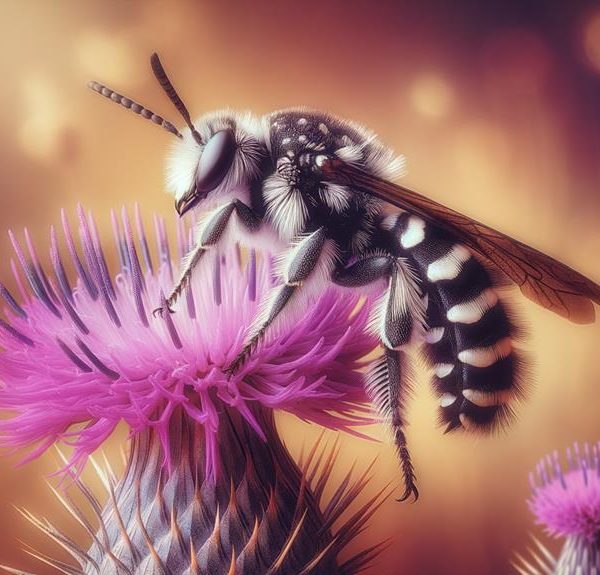Intriguing and crafty, discover how the Cuckoo Leafcutter Bee manipulates the labor of its peers, and its surprising impact on our ecosystem.
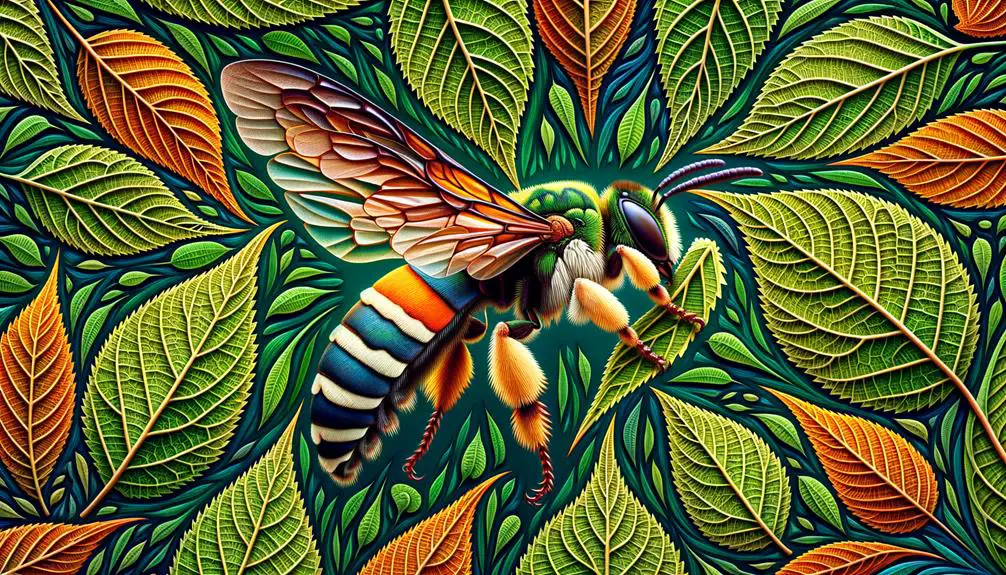
Cuckoo Leafcutter Bee
Just as a cuckoo bird slips its eggs into another bird's nest, so too does the Cuckoo Leafcutter Bee have its own crafty ways.
You'd be intrigued to know that this bee doesn't build its own nest or gather pollen. Instead, it exploits the hard work of others, laying its eggs in the nests of unsuspecting Leafcutter bees.
But why does it do this, and what impact does this have on the ecosystem? That's a fascinating journey you might want to embark on!
Understanding The Cuckoo Leafcutter Bee
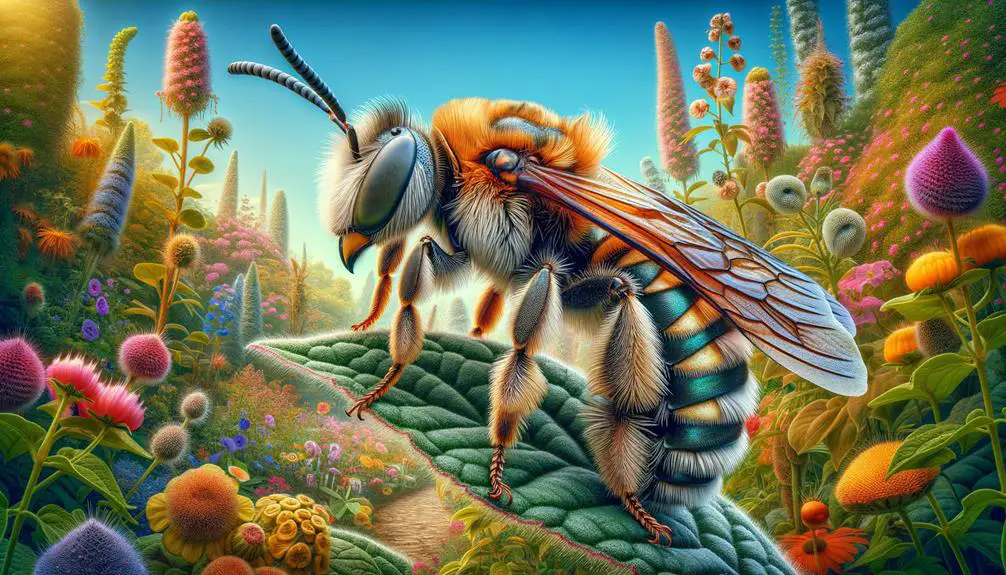
To fully grasp the nature of the Cuckoo Leafcutter Bee, you must first understand its unique lifecycle, distinguished by its parasitic behavior and distinctive leaf-cutting habits. Unlike most bees, the Cuckoo Leafcutter Bee doesn't build its own nest. Instead, it infiltrates the nests of other leafcutter bees, laying its eggs in the cells already stocked with pollen and nectar. This sly tactic allows the Cuckoo Leafcutter Bee to bypass the laborious task of nest building and food gathering.
The bee's intriguing leaf-cutting behavior is another key aspect of its identity. It's not the Cuckoo Leafcutter Bee itself, but the victim bee species that cuts leaves to build nests. These sliced leaf sections are used to construct individual cells within the nest where eggs are laid and larvae grow. In a clever twist of nature, the Cuckoo Leafcutter Bee parasitically exploits this hard work for its own reproductive advantage.
Understanding the Cuckoo Leafcutter Bee's behavior provides a fascinating insight into the complexity of nature's strategies and survival mechanisms, showcasing the bee's adaptation to its environment in a surprisingly crafty way.
Lifecycle and Reproductive Tactics
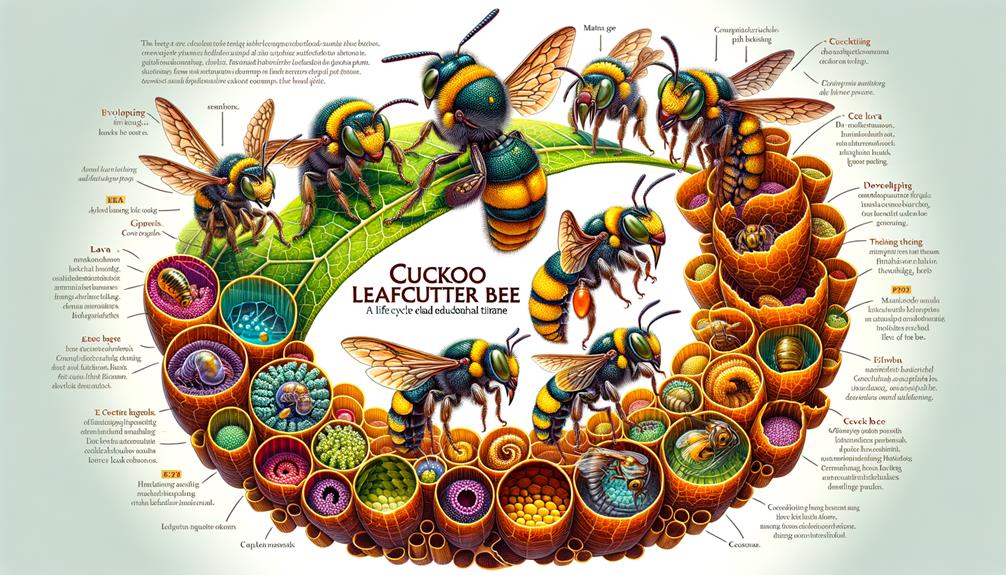
Let's now examine the lifecycle and reproductive tactics of the Cuckoo Leafcutter Bee, an intricate process defined by its cunning parasitic behavior. Unlike other bees, they don't build their own nests. Instead, they infiltrate the nests of other leafcutter bee species, where they lay their eggs.
Here's how it works. The female Cuckoo Leafcutter Bee seeks out a suitable host nest. Once found, she'll sneak in and lay an egg, typically in a cell that's already been provisioned by the host bee. Remarkably, the cuckoo bee's egg develops faster than the host's, ensuring its larva will hatch first.
This is where the parasitic nature really comes into play. The newly hatched cuckoo bee larva will then consume the host's egg or larva, along with the food stored for it. After this initial feast, the cuckoo larva will pupate, emerging as an adult bee the following season.
These reproductive tactics allow the Cuckoo Leafcutter Bee to exploit the labor of others, ensuring its own survival without the need for nest building or foraging. It's a unique, if ruthless, adaptation that showcases the diversity of strategies within the insect world.
Cuckoo Leafcutter Bee's Habitat
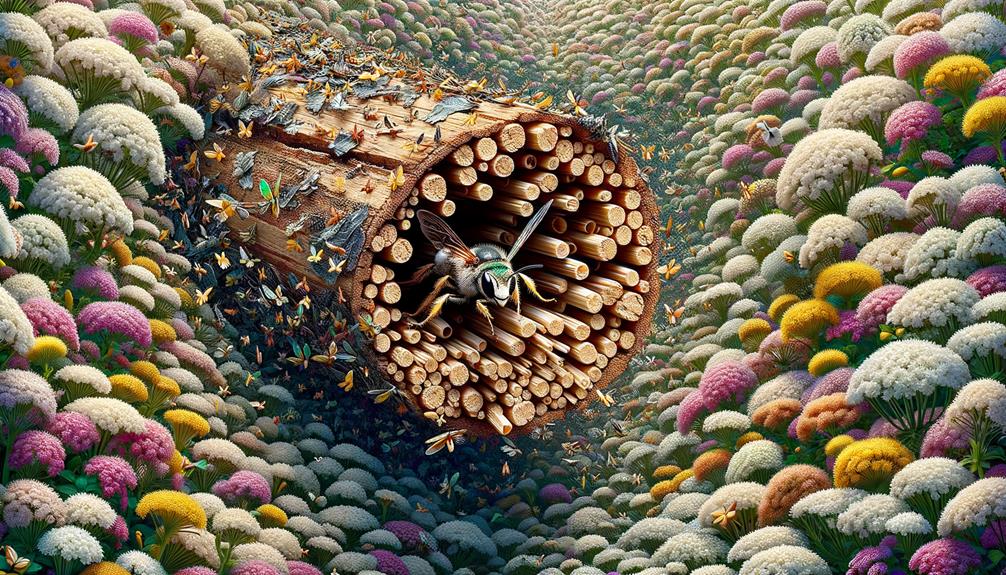
Dotted across various landscapes, you'll find the Cuckoo Leafcutter Bee inhabiting a wide range of environments, from lush gardens and dense forests to open meadows and even urban areas. These bees aren't picky about their habitat, but they do require the presence of flowers for nectar and pollen, as well as the availability of suitable nesting sites.
Interestingly, these bees don't construct their own nests. Instead, they exploit the nests of other bee species, particularly those of the Leafcutter Bee. They're known as 'cuckoo' bees because of this behavior, similar to the cuckoo bird that lays its eggs in the nests of other bird species.
The adaptability of the Cuckoo Leafcutter Bee to various environments is astounding. Whether it's a bustling cityscape with tiny green spaces or a sprawling country meadow, you'll find them thriving as long as their basic requirements are met. However, the loss of natural habitats and the decline in native flowers due to human activities pose a serious threat to their survival. Their remarkable adaptability has allowed them to survive, but the question remains: for how long?
Their habitat preferences and adaptability make them a fascinating subject of study, offering insights into the resilience and adaptability of nature.
Role in the Ecosystem
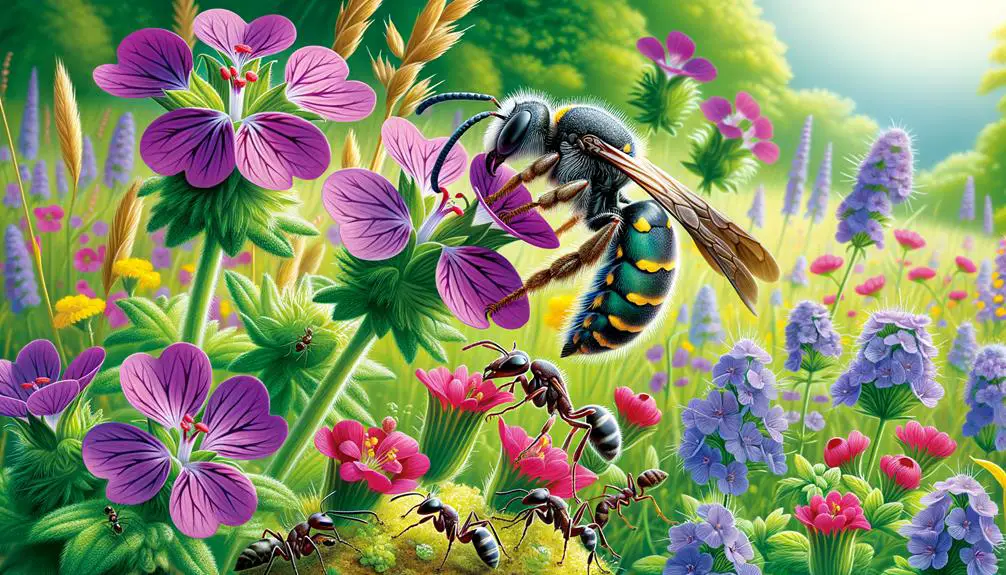
While the Cuckoo Leafcutter Bee's adaptability and habitat preferences are intriguing, its role in the ecosystem is equally pivotal, serving as a key player in the process of pollination. This bee's contribution extends beyond its own survival and reproduction. It's instrumental in maintaining the health and diversity of many ecosystems.
Here's a breakdown of its ecological significance:
- Pollination: As the bee visits flowers for nectar, pollen sticks to its body and is transported to the next flower it visits. This aids in plant reproduction and the production of fruits and seeds.
- Biodiversity: By pollinating a wide variety of plants, the Cuckoo Leafcutter Bee contributes to biodiversity, supporting various insects and animals that depend on these plants for survival.
- Ecosystem Balance: As a prey species, it provides a food source for various predators, maintaining a balance in the ecosystem.
However, it's important to note that the bee's role depends on the health of its habitat. If the environment is degraded or lost, it can't function effectively, impacting the entire ecosystem. Therefore, understanding and preserving its habitat is crucial for its continued contribution to the ecosystem.
Threats and Conservation Efforts
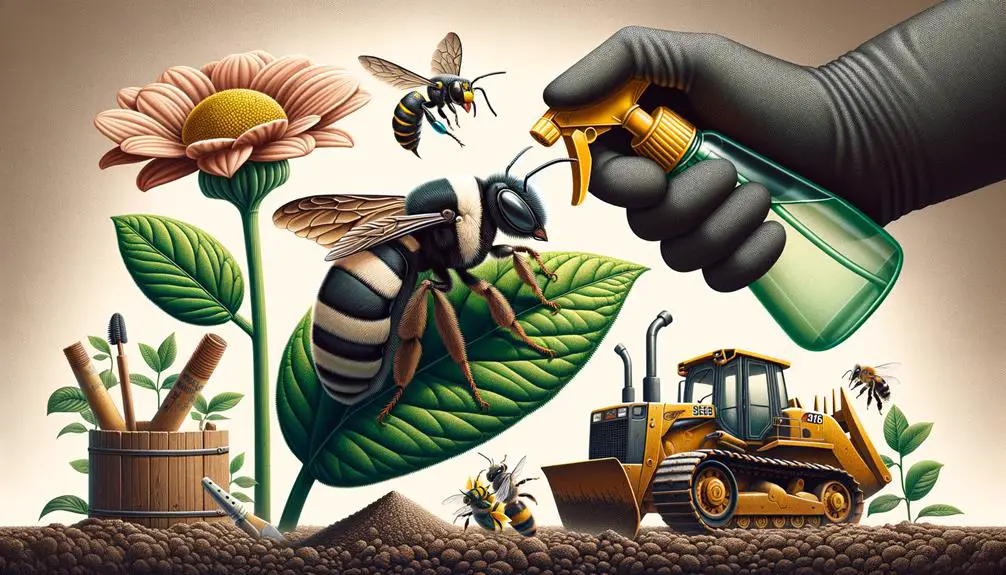
Despite its ecological importance, the Cuckoo Leafcutter Bee faces numerous threats that jeopardize its survival and influence on biodiversity. Pesticide exposure, habitat loss, and climate change have conspired to put this species at risk. Pesticides, particularly neonicotinoids, can disrupt their neural functioning and reproductive capacity. Habitat loss due to urbanization, agriculture, and deforestation weakens their nesting and feeding grounds, while climate change alters the timing and availability of their floral resources.
Conservation efforts are essential to safeguard their existence. You can contribute by minimizing pesticide use, planting native plants, and providing nesting sites in your garden. National and international organizations are also involved in monitoring these bees, implementing habitat restoration projects, and advocating for policies that reduce pesticide use and protect pollinator habitats. Researchers are studying the bees' behavior, reproduction, and interaction with the environment to better understand their needs and vulnerabilities.
However, more coordinated global efforts are needed. Climate change, being a global threat, requires international cooperation. Policies should aim to reduce greenhouse gas emissions and promote sustainable practices. Everyone's efforts count in ensuring the Cuckoo Leafcutter Bee's continued role in biodiversity and our lives.
Conclusion
In sum, you've delved into the fascinating world of the cuckoo leafcutter bee. You've explored its unique lifecycle, cunning reproductive tactics, and crucial role in our ecosystem.
You've also identified the threats they face and the conservation efforts in place. Understanding these intricate creatures enhances our appreciation for biodiversity, reminding us that every species, no matter how small, plays a vital role in sustaining life on Earth.

